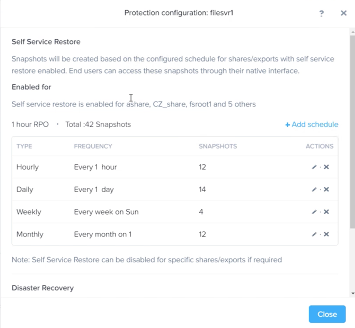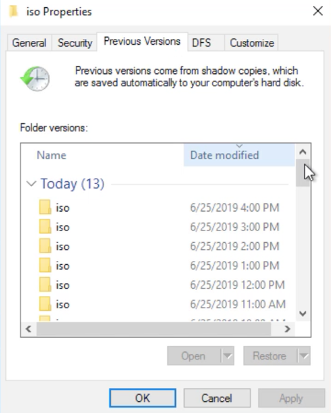This post was authored by Devon Helms, Director of Product Marketing - Storage Services
Simplicity is included with Nutanix Files out of the box. Sometimes that means making management and administrative tasks easier so that application and use case owners can self-manage file storage. Other times it means extending control to end users and empower self-service. In a world where more people are working remotely, self-service becomes even more important as the remote user may not have ready access to office resources. A great example of this is the self-service restore feature of Nutanix Files.
Nobody is perfect, we all make mistakes. When it comes to a mistake such as damaging or deleting files accidentally, the ability to rapidly recover a known good copy of the file can prevent a minor annoyance from becoming a major problem. Typically recovering a file would require the involvement of trouble tickets, storage or backup administrators, and hours or days of wait time. But with Nutanix Files self-service restore, an end user can look at previous versions of the deleted file and restore on their own from a good previous version from their Windows browser.
Self-service restore is set up in Nutanix Files at the file server level. Individual shares can be excluded from self-service giving the administrator control of which shares leverage this protection and which don’t. Self-service restore leverages snapshots for recovery with frequency settings as often as once per hour. Snapshots are always space efficient copies of your file server data so the capacity and resource hit to your file server is minimal.

The best part of self-service restore is simplicity. The restore process uses Windows previous version, a feature of Windows that is already available to your end users in their Windows explorer file properties area.
An end user who is looking to restore a previous version of a file can right click a folder and bring up the properties window. The Previous Version tab will access the available snapshots on Nutanix Files to give the end user a list of the files available. Users can drill down to find the right file from the right period of time and restore that file in-place or as a new version. This capability is supported across both SMB and NFS shares without changing the user experience.

The benefits are both to the end user and to the administrator. End users benefit from rapidly recovering files on their own eliminating the time to create the restore request and the wait time for the restore request to be fulfilled. The benefits to the administrator are the improving quality of service to end users who are able to get what they need faster and reduced break-fix activities, freeing the administrator to do more valuable tasks.
Self-service restore has been available with Nutanix Files for several versions and many Nutanix Files customers already enjoy the benefits of this valuable feature. You can hear it in our own customers words in this video from Sheppard Mullin
If you’re already a Nutanix customer but haven’t yet tried Nutanix Files you can try it in your own environment today to see just how simple Nutanix Files is. Every Nutanix cluster is entitled with 1 free TB of Nutanix Files for details on setting up Nutanix Files in your environment.
Be sure to continue the conversation in our Nutanix Files forum and chat with your peers, exchange ideas and be informed on the best wasy to runn Nutanix Files in your environment.
© 2020 Nutanix, Inc. All rights reserved. Nutanix, the Nutanix logo and all Nutanix product, feature and service names mentioned herein are registered trademarks or trademarks of Nutanix, Inc. in the United States and other countries. All other brand names mentioned herein are for identification purposes only and may be the trademarks of their respective holder(s). This post may contain links to external websites that are not part of Nutanix.com. Nutanix does not control these sites and disclaims all responsibility for the content or accuracy of any external site. Our decision to link to an external site should not be considered an endorsement of any content on such a site.


